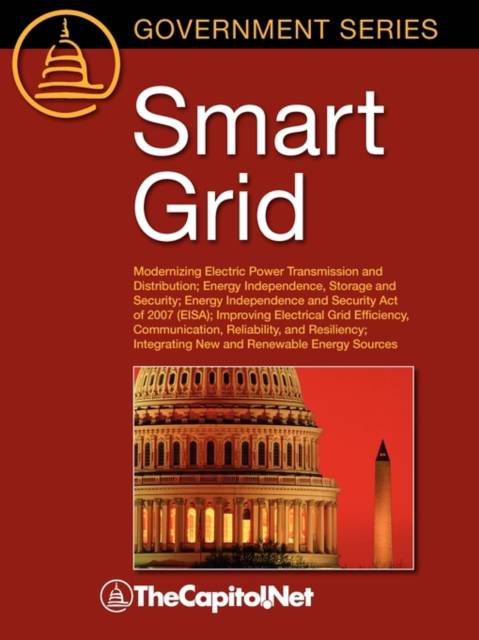
- Afhalen na 1 uur in een winkel met voorraad
- Gratis thuislevering in België vanaf € 30
- Ruim aanbod met 7 miljoen producten
- Afhalen na 1 uur in een winkel met voorraad
- Gratis thuislevering in België vanaf € 30
- Ruim aanbod met 7 miljoen producten
Smart Grid
Modernizing Electric Power Transmission and Distribution; Energy Independence, Storage and Security; Energy Independence and Security Act of 2007 (EISA); Improving Electrical Grid Efficiency, Communication, Reliability, and Resiliency; Integra
Stan Mark Kaplan, Fred SissineOmschrijving
"Smart Grid: Modernizing Electric Power Transmission and Distribution; Energy Independence, Storage and Security; Energy Independence and Security Act of 2007 (EISA); Improving Electrical Grid Efficiency, Communication, Reliability, and Resiliency; Integrating New and Renewable Energy Sources," part of the Government Series from TheCapitol.Net
The electric grid delivers electricity from points of generation to consumers, and the electricity delivery network functions via two primary systems: the transmission system and the distribution system.
The transmission system delivers electricity from power plants to distribution substations, while the distribution system delivers electricity from distribution substations to consumers.
The grid also encompasses myriads of local area networks that use distributed energy resources to serve local loads and/or to meet specific application requirements for remote power, municipal or district power, premium power, and critical loads protection.
The concept of a "smart grid" lacks a standard definition but centers on the use of advanced technology to increase the reliability and efficiency of the electric grid, from generation to transmission to distribution.
The move to a smart grid is a move from a centralized, producer-controlled network to one that is less centralized and more consumer-interactive.Enables informed participation by consumersAccommodates all generation and storage optionsEnables new products, markets, and servicesProvides the power quality for the range of needsOptimizes asset utilization and operating efficiencyOperates resiliently to disturbances, attacks, and disasters
The Department of Energy, Office of Electricity Delivery and Energy Reliability is charged with orchestrating the modernization of the nation's electrical grid. The office's multi-agency Smart Grid Task Force is responsible for coordinating standards development, guiding research and development projects, and reconciling the agendas of a wide range of stakeholders, including utilities, technology providers, researchers, policymakers, and consumers.
The National Institute of Standards and Technology (NIST), has been charged under the Energy Independence and Security Act (P.L. 110-140, Dec. 19, 2007) with identifying and evaluating existing standards, measurement methods, technologies, and other support services to Smart Grid adoption.
28 Chapters, over 600 pages.
Complete Table of Contents at www.1626SmartGrid.com
Specificaties
Betrokkenen
- Auteur(s):
- Uitgeverij:
Inhoud
- Aantal bladzijden:
- 619
- Taal:
- Engels
- Reeks:
Eigenschappen
- Productcode (EAN):
- 9781587331626
- Verschijningsdatum:
- 11/09/2009
- Uitvoering:
- Paperback
- Formaat:
- Trade paperback (VS)
- Afmetingen:
- 280 mm x 210 mm
- Gewicht:
- 1424 g

Alleen bij Standaard Boekhandel
Beoordelingen
We publiceren alleen reviews die voldoen aan de voorwaarden voor reviews. Bekijk onze voorwaarden voor reviews.











